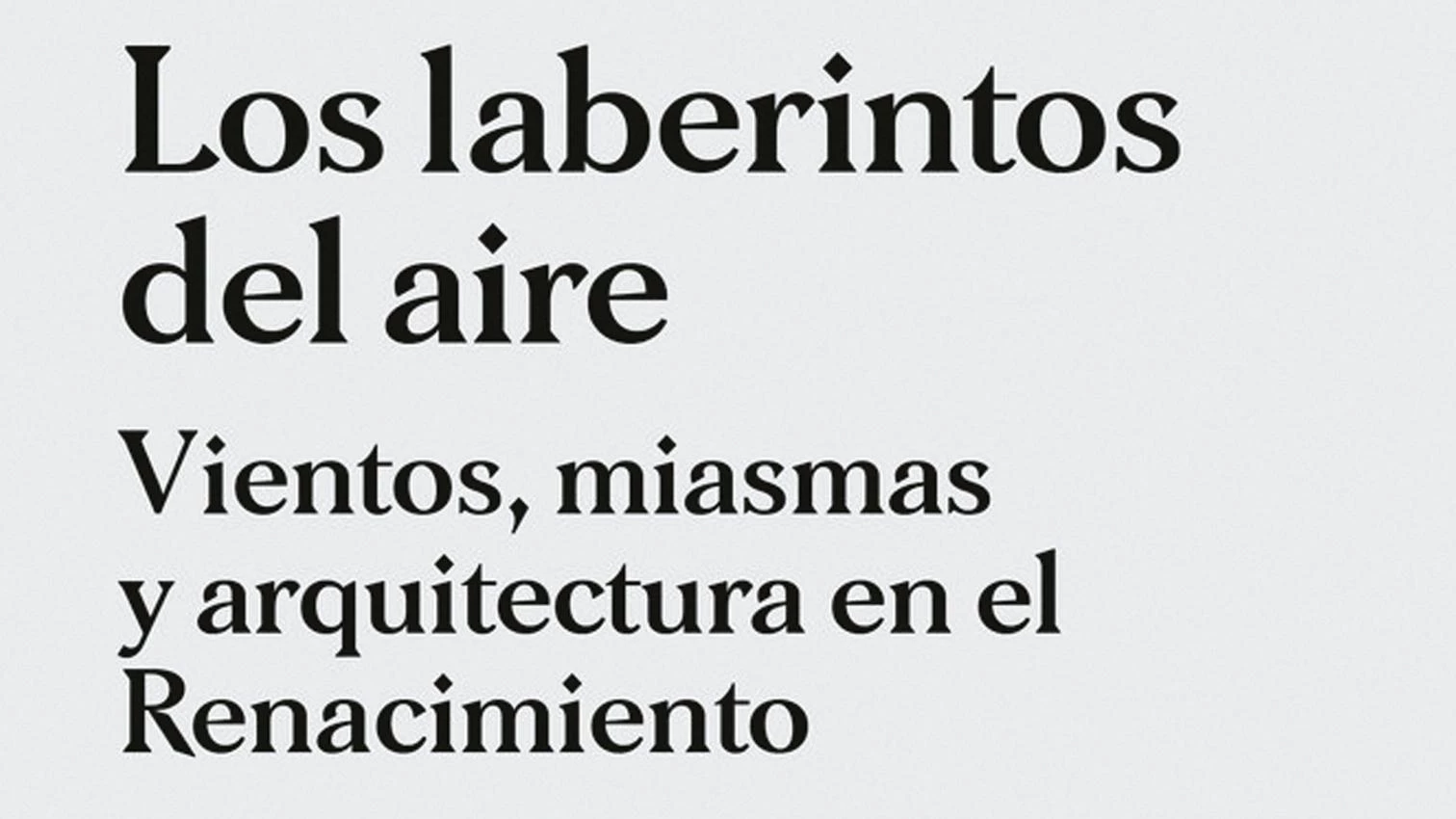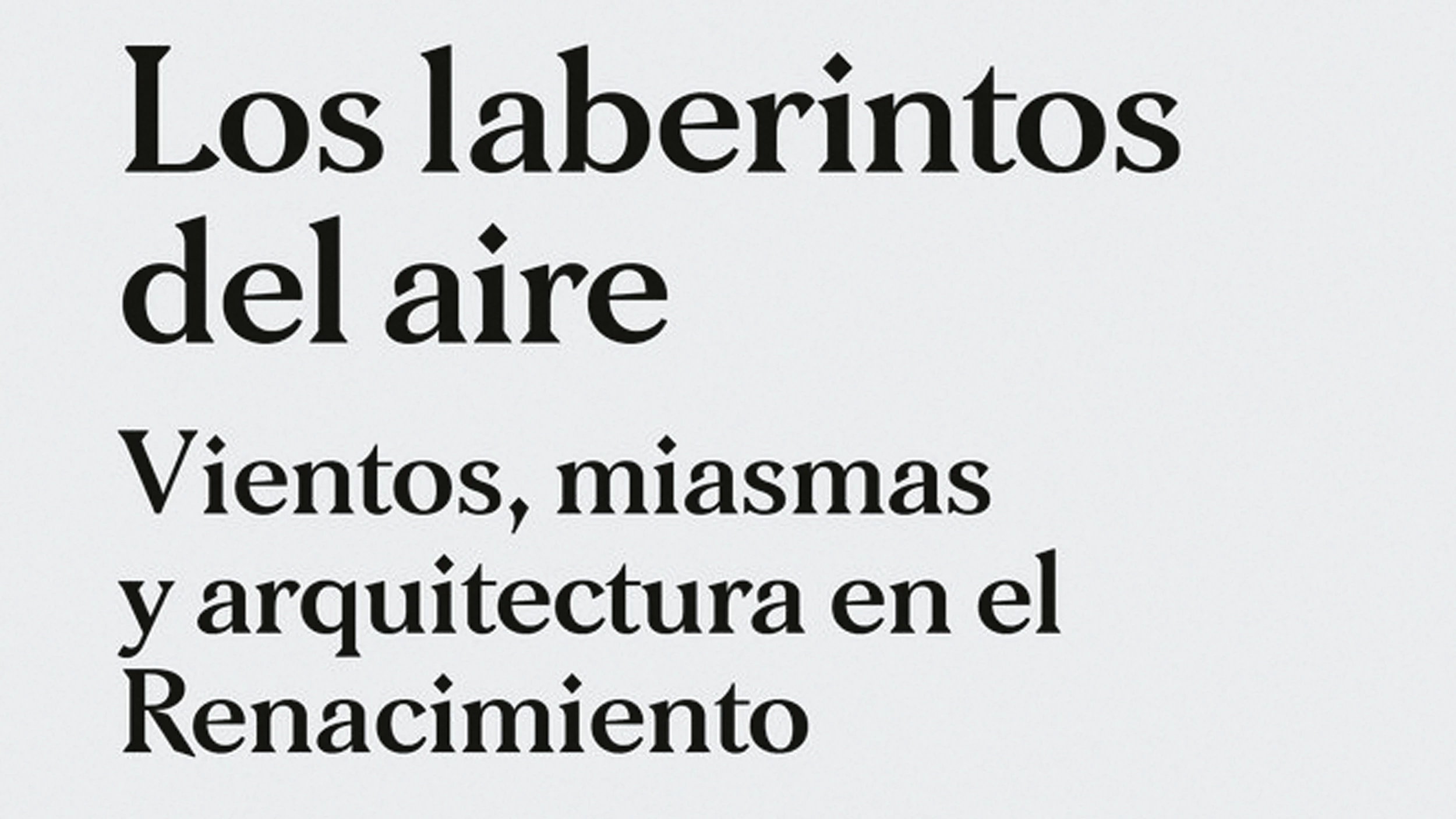Construir con aire
Another Look on Renaissance

Vitruvius laid it down that the first requirement of architecture was the firmitas of its material construction, but he did not forget that buildings and cities, and the lives of their inhabitants, are also made of components that cannot be seen, touched, measured, or weighed, yet are as real as brick and mortar. Implicit in the foundational text of Western architectural culture was the possibility – and necessity – of a history of the invisible, incommensurable, and imponderable.
Eduardo Prieto was well aware of it when he wrote this book whose theme is air, a new link in a line of research that has yielded major contributions to the history of a traditionally ignored architecture. I am referring in particular to Historia medioambiental de la arquitectura (2019).
Against the idea of the Renaissance as purely intellectual, the author points out that interest in matter impregnates everything in humanistic culture, and highlights an especially significant chapter of this naturalism: the many ways that scientific, philosophical, and hermetic reflections on air were built into Renaissance architecture.
In Renaissance culture, Alberti was the great theorist on linear perspective, but also the pragmatic urbanist who suggested that street design follow the course determined by dominant winds rather than a rectilinear geometry. We must understand Leonardo’s curiosity about natural phenomena, the view of nature held by underestimated figures like De l’Orme or Scamozzi, and the strength of hermetic thought in a line that leads from Ficino to Fludd.
This brief dense book traces the heritage of Greek and Roman thought, reconstructing moments of a culture of air that takes us from Aristotle or Hero of Alexandria to Vitruvius or Pliny, and is dotted with well-known buildings on which this work reveals a new layer of significance. A heretofore little-studied theme which now gives us a full range of the complexity of the Renaissance’s connection to classical culture.
The multiple meanings of air in classical culture connect with themes stretching from Hippocratic tradition to the four elements or the humors of the human body, and to its influence on the art of raising buildings and cities. This also leads to the subject of the benign or malignant nature of air.
Prieto then unstrings aspects of the air/architecture pairing. Mythical aviaries and weather vanes are manifestations of the invisible, not to mention the important but ignored case of the cooling ducts in the Costozza villas. But he also shows how icons of Renaissance architecture can also be analyzed from the logic of airing, orientation, and ventilation. The comparative image of the orientation of some major Renaissance works is a good example of another merit of the book: well selected images that are much more than illustrations, constituting a discourse in dialogue with the text.
The nymph that Aby Warburg made a key figure of his theory on the survival of images always appeared caressed by the breeze, like Botticelli’s Venus. Now this indispensable book explains how the architecture of the Renaissance was built also with air.







